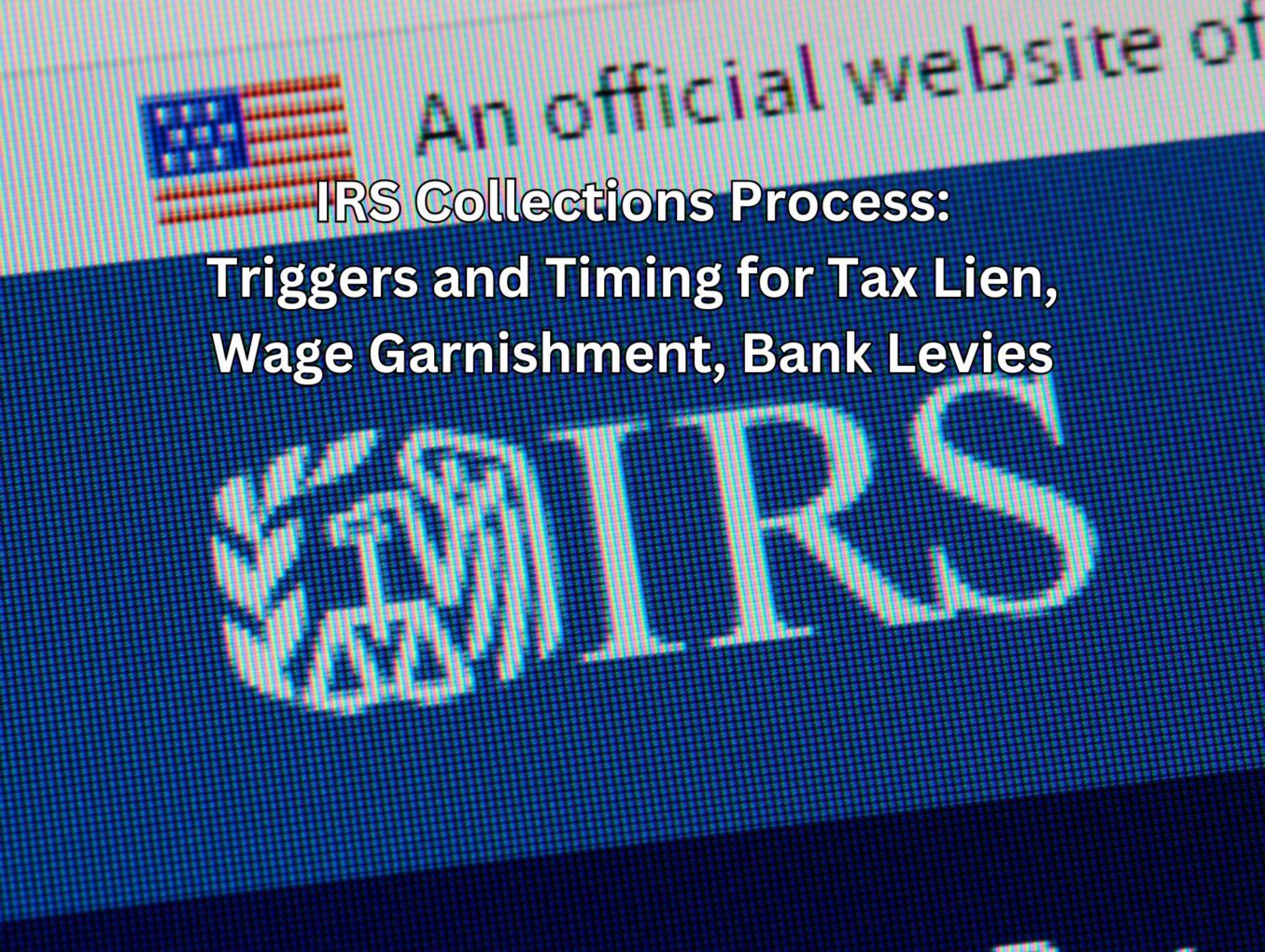What Triggers a Tax Lien?
When taxpayers owe back taxes, the IRS may issue a federal tax lien on assets, real estate, personal possessions, and/or funds until the full tax debt is paid.
Tax liens target liquid assets that can be quickly turned into cash to resolve the debt. The IRS also issues a Notice of Federal Tax Lien to inform creditors of the lien.
In most cases, the IRS will not place liens on a person’s assets unless they owe over $10,000 or they have not made payment arrangements to resolve the debt within a number of years.
Neglecting to work with the IRS to settle a substantial tax debt will likely lead to a tax lien so the IRS can seize and convert assets for tax payments.
When Does a Tax Lien Start?
First, the IRS sends a CP14 balance due notice a few weeks after the April due date. Reminders CP501, CP503, and CP504 are then sent over a period of 1-3 months after CP14.
When the tax debt is more than six months past due, the IRS sends a notice of intent to file a lien. Once the lien notice is sent, taxpayers have around 30 days to resolve back taxes before the IRS places a tax lien.
When Does a Tax Lien End?
Tax liens end when the tax debt is paid in full or expires due to the IRS collection statute. The IRS typically releases liens within 30 days after the debt is paid.
It is best to make payment arrangements with the IRS, like an Installment Agreement or Offer in Compromise, before a lien starts.
Otherwise, options are limited to lien discharge (removes a lien only from a specific property), subordination (allows lenders and other creditors to collect before the IRS), or withdrawal (removes the lien’s public notice) until you pay off the debt.
What Triggers Wage Garnishment?
When delinquent taxpayers do not own valuable liquid assets that can be seized with a tax lien, the IRS may start to take money directly from paychecks.
Depending on the tax debt amount and other factors, individuals facing wage garnishment may see take-home pay reduced by 25% to 50%.
Employers must comply with wage garnishment notices by withholding the requested amount to send to the IRS.
When Does Wage Garnishment Start?
Like tax liens, the IRS will first send notices CP14 (notice of tax due after the tax due date), CP501 (first balance due reminder 1 month after CP14), CP503 (second balance due reminder 1 month after CP501), and CP504 (notice of intent to levy 1 month after CP503.
If you ignore these notices and do not pay or agree to a payment plan with the IRS, you will receive either a CP90 or CP91 notice.
You will then have 30 days to resolve the tax debt or request a Collection Due Process Hearing. If you do nothing, the IRS will start to garnish your wages.
When Does Wage Garnishment End?
In most cases the IRS will stop wage garnishment when you either pay off your tax debt, you are approved for an IRS payment plan, or the garnishment causes severe financial hardship.
Garnishment can also end when your CSED expires. Keep in mind that the IRS cannot ever take your entire paycheck or garnish more than you owe for back taxes.
What Triggers a Bank Levy?
If a taxpayer does not have the assets for a lien and/or does not have steady income for wage garnishment, the IRS will levy a bank account.
A bank levy involves the IRS seizing funds directly from a taxpayer’s bank account to settle outstanding tax debt. They can take money from both checking and savings accounts.
Depending on how much you owe the IRS, they may prefer a bank levy over wage garnishment because they can seize money from banks more quickly than paychecks. Bank levies are also usually a one-time action whereas garnishment is continuous.
When Does a Bank Levy Start?
You will receive the same balance due notices as wage garnishment, starting with CP14 shortly after the tax due date and ending with CP90/CP91 anywhere from 3-6 months later.
When you receive CP90/CP91, you have 30 days to pay off your tax debt, apply for an Installment Agreement, or request and Offer in Compromise.
If you do not, your bank will freeze your account for another 21 days. If the tax debt has not been resolved at that point, your bank will send money from your account directly to the IRS.
When Does a Bank Levy End?
Just like with tax liens and wage garnishment, to stop a bank levy you will need to pay off your IRS debt, be on an Installment Agreement or other payment plan, or prove the bank levy is a hardship.
Note that the amount taken from your bank account can be up to the full amount of back taxes you owe. Although a bank levy is usually a one-time action, the IRS can issue subsequent bank levies for you to pay off any new tax debt.
Need more help? You can start online by answering 6 simple questions.
6 Simple Questions. Free Evaluation.

